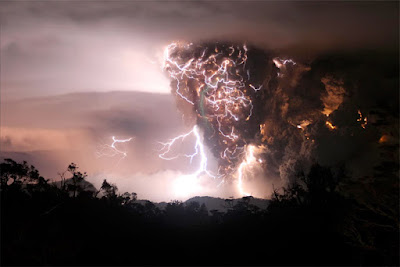Valencina de la Concepción is a town in southwestern Spain that sits on top of an amazing archaeological site dating to between 3000 and 2000 BCE. That covers the beginning of the Bronze Age, dated in Spain to around 2200 BCE, and the preceding Copper Age or Chalcolithic period. One of the many famous artifacts from the site is this carved slate owl, which now serves as the emblem for the town.
A lot of archaeology has been done here, probably more than on any other site of that period in Spain. But the site is huge and very complex. Estimates of its size range from 300 to 450 hectares, or 750 to 1100 acres. Much of the archaeology has been of the "rescue" type, that is, archaeologists hopping in after another pit full of bones was turned up while somebody was digging a foundation or utility trench. (Remember there is a modern town on top of the site.)
It seems to be a running joke among Spanish archaeologists that the community at Valencina de la Concepción consisted entirely of pits and ditches; by
one estimate there should be around 40,000 in the whole site. Some of them have burials in them – at least 134 skeletons have been recovered from the site – while others do not. In general, there is not much difference between the pits and ditches that contain skeletons and those that do not. But a great deal of ordinary domestic trash has been found on the site, which certainly makes it look like people lived there. That is, the place was obviously a site of great ritual importance, but it was also a town. Like Jerusalem, say.
The most famous elements of the site are two megalithic tombs known as
La Pastora (the shepherdess) and
Matarrubilla. These are "Tholos" constructions, that is, a long tunnel led to a round burial chamber. The gallery at La Pastora is 140 feet (43 m) long. Recent studies of the mass of radiocarbon dates from the site suggest that these tombs were built between 2700 and 2500 BCE. La Pastora was thoroughly looted a long time ago, so not much is known about it contents. Matarrubilla was excavated in 1910, and
reported finds include gold, ivory, and "green stones."
In 2007 a truly extraordinary find was made in Valencina de la Concepción: another tholos. This one had collapsed in the distant past and had not been completely looted, and it held wonderful things. Excavation went on until 2010, and detailed analysis of the finds is
just now coming out.
This tomb seriously needs a cool name, because the archaeological publications refer to it as "Structure 10.049 of the PP4-Montelirio sector" and none of the newspaper accounts I have seen suggest it has any other. It was probably built between 2850 and 2700 BCE. (reconstruction above)
Within the main chamber was the burial of one male "prince" and about two dozen other people. Their skeletons had been disturbed and not all of the burials in the crowd could be properly analyzed, but
news accounts from the time of the excavation reported that all were women. The
latest statement from the excavators is that two are teenagers, while the rest all are between 20 and 35 years of age; 15 are women, and five could not be identified.
The prince had an astonishing collection of artifacts, like this crystal dagger with an elephant ivory handle and belt plate.
Crystal arrowheads
And a crystal spear head. So a complete set of
crystal weapons.
The subsidiary tomb contained a single male, 17-25 years old. An elephant tusk was laid above the young man’s head. Other finds include a set of twenty-three flint blades and several ivory artifacts.
DNA study of the skeletons is under way, so we should soon know if this really was a prince and a retinue of women, and perhaps a lot of other things. It's an extraordinary site, from the time when, it seems, princely dynasties first established their hold on western Europe. Amazing.
Ivory figurine from Valencina de la Concepción
UPDATE: I mixed up two separate features here, the Montelirio Tholos and another burial dubbed "Structure 10.043-10.049 of the PP4-Montelirio sector." Sorry, but everybody seems confused about this. The Montelirio Tholos is the one with two visible chambers; for more on that,
see here. The burial of the "prince" with the crystal dagger was in the other tomb.



















































